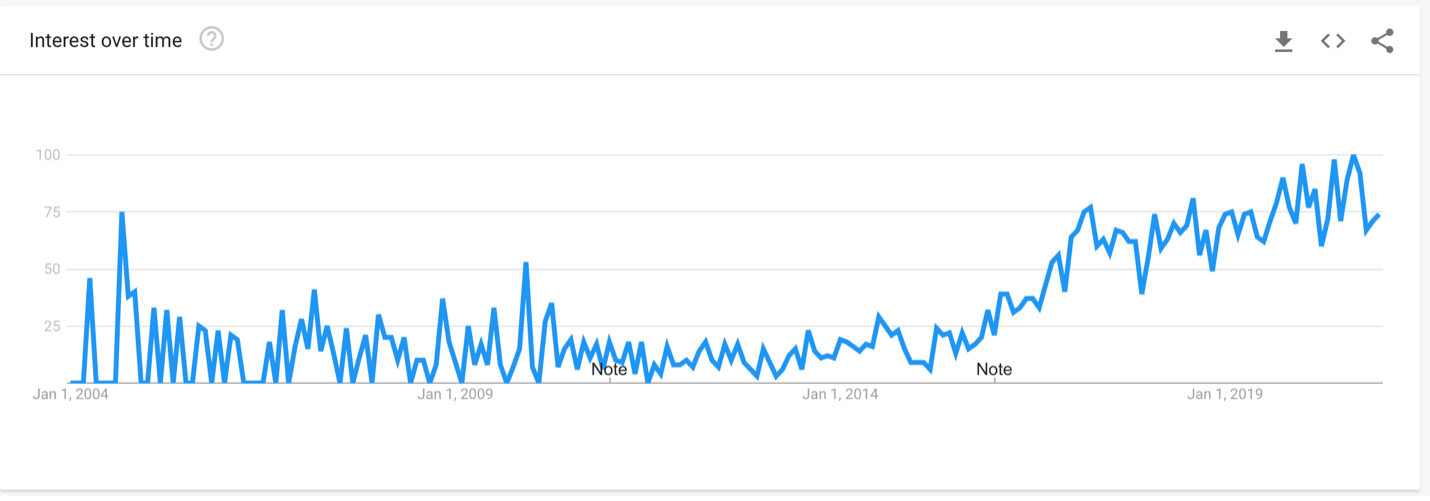Account-based marketing (ABM) has become a major tenet of the newest marketing and sales strategies in B2B companies recently, but when did ABM enter the scene?
While there’s growing interest in ABM to drive revenue in B2B companies, the truth is that the core tenet of ABM has been put into practice well before the buzzword was recently coined.
If you think about a typical sales funnel, the goal is to get as many leads as possible so that the right ones will trickle down and become customers. The idea behind ABM is to flip the typical sales funnel so that you start with ideal accounts and target them directly without wasting time on leads that will never convert.
Early Examples of ABM
Here’s what ABM looked like before the digital era. Imagine way back when a local service company wanted to win the largest company in town as a customer. They might have identified people in that company, perhaps by buying names from a list broker, and made their approach by mailing these company employees a compelling letter.
They were identifying ideal client profiles (ICPs) by choosing who they wanted as a client, while also figuring out contacts within the account who would influence the buying process to close the deal.
That’s the premise of ABM!
The book Selling to VITO (Very Important Top Officer), written in 1999, discusses how to use a letter (a letter!) to crack the C-Suite of a targeted company.
In this example, the services business might also have thrown an event and invited key people from the targeted company to attend. These activities are Account-Based Marketing, and while way back when we might not have used that name, the core ideas have been used for decades.
ABM in Practice – A Sample Campaign
Here’s how it would’ve happened:
Let’s imagine I’m the VP Sales & Marketing at a local services company in 1986. My challenge is to enter a new market, the chemical process industry, with a new technology at the time, which reduced hazardous emissions that had recently been more rigorously regulated (VOCs, Volatile Organic Compounds) by the EPA.
At the time, my colleagues and I knew who the primary future customers were, the major chemical companies of the day. However, there was a vast range of industrial chemical processes and an enormous number of facilities to choose from. The question became, how do we start?
The internet as we know it today was just getting started, so demand generation as we know it today wasn’t possible. How would we reach our target accounts?
STEP 1 - ACCOUNT DISCOVERY
The first step in developing our ABM strategy (we didn’t call it that, or really think about it as that at the time) was Account Discovery.
Just like today, Account Discovery is the first step in creating your ABM strategy. Back then, we learned that the EPA was tracking emissions of VOCs, that their intention was that this data would be available to the public, and that this data could be purchased on CDs (that’s Compact Disks for the younger crowd). This data, the Toxic Release Inventory, is a spreadsheet that lists facilities by address and the amounts and types of chemicals reported as released under the new regulations.
By sorting through this data, we were able to create a short list of target companies with significant emissions that we could help reduce.
Now, those are called our ICP target accounts.
STEP 2 – ACCOUNT ACTIVATION
The second step in ABM is Activation. Activation is the execution of marketing activities designed to build your brand with specific targeted companies and generate high-quality leads from within those companies.
In the case of our historical analog, we purchased data from a List Broker (a list broker was a company that you called, on a push button landline phone back then, and bought contact lists from). The “data” came in the form of a roll of envelope labels with names and addresses on them.
The tactic used for activation was to send a letter with a SASE (self-addressed stamped envelope) and if the recipient of the outbound letter wanted a VHS tape to learn about this solution, they simply stuck the letter back into the stamped envelope and dropped it in the mail back to the sender.
Today, those activities might involve email sequences, outbound sales calls, targeted digital ads based on IP address or LinkedIn ads based on role/title, or other channels as needed.
STEP 3 - REPORTING
The third step in an ABM strategy is reporting. Reporting allows you to measure the success of your ABM strategy.
In our historical case, we would count how many letters came back, how many turned into sales calls, and ultimately how many became customers.
This was all a very labor intensive and slow process; however, it defines the core steps of ABM: Implementation, Account Discovery, Account Activation, and Reporting.
Why Increasing Interest in ABM Now?
In recent years, ABM started taking root as a defined practice in the 1990s when companies realized that marketing needed to become more personalized for buyers in both B2C and B2B spaces. In the early 2000s, the phrase “account-based marketing” started gaining momentum when B2B companies focused their attention on accounts (or companies as a whole) to target instead of individuals since there are typically multiple decision makers in a large B2B transaction.

Above, a GoogleTrends report of “Account-Based Marketing” shows an acceleration in search interest starting around 2015, as the technologies to enable ABM as a specific strategy proliferated.
Since then, ABM has had a steady rise in popularity, and has changed the game for B2B marketers in many ways, opening doors for new modes of demand generation. The concept has now reached awareness in the C-suite due to the ability to boost sales pipelines and company revenue – if it’s done right.
Technology has now put the ability to execute an ABM strategy across multiple marketing channels, into the hands of any company.
However, to many marketers, the ABM methodology is still a mystery and the tools have been very complicated and expensive for many companies, agencies, and B2B marketers.
Some tech companies started getting savvy to make it more accessible, like HubSpot’s ABM Software launch in 2020, but they still require a lot of work behind the scenes to put ABM strategies into practice effectively.
If you’re wondering how you might be able to implement ABM for your marketing agency or organization, you’re in good company. Plus, there are tools that make it easier than ever to be running campaigns in no time.
ABM requires buy-in from multiple areas within an organization, and change is tough.
Learn how to shift your teams with our guide: Transitioning Your Team to an Account-Based Mindset: A Guide for Agency Leadership.
.png?width=900&name=Untitled%20design%20(7).png)



.png)